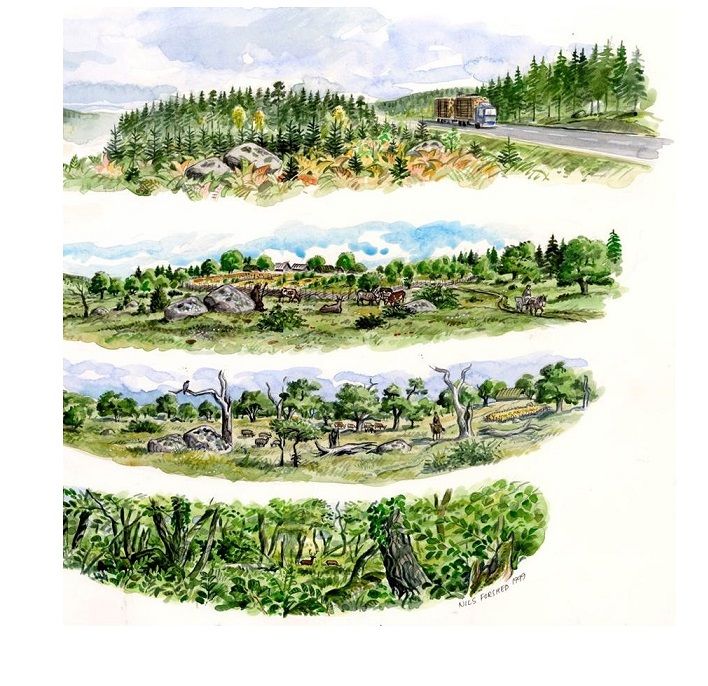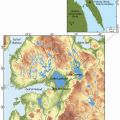
Seeing the wood for the trees: using hazelnuts to reconstruct ancient woodlands
Humans in northern Europe have been snacking on hazelnuts — a key accessible source of energy —for at least 12,000 years. Now, a study led by the University of Oxford has shown that it is possible to analyse the carbon isotope values of hazelnuts found at archaeological sites to reveal what the places humans lived in millennia ago looked like.
Our study has opened up new potential for directly tying environmental changes to people’s foraging activities and reconstructing the microhabitats that they exploited.
Dr Amy Styring, School of Archaeology, University of Oxford
In the new study, published this week in Frontiers in Environmental Archaeology, the researchers devised a method of analysing preserved hazelnut shells to indicate whether the microhabitats around archaeological sites were heavily forested or open and pasture-like. This is based on the fact that hazelnuts which grew in closed environments, such as thick shady forests, have very different carbon isotopes to hazelnuts growing in open, sunny environments. The new method could help us to understand not only what a local environment looked like thousands of years ago, but how humans have impacted their habitats over time.
’By analysing the carbon in hazelnuts recovered from archaeological sites in southern Sweden, from Mesolithic hunter-gatherer campsites through to one of the largest and richest Iron Age settlements in northern Europe, we show that hazelnuts were harvested from progressively more open environments,’ said lead author Dr Amy Styring of the University of Oxford.
'Neolithic Nutella'
Humans in northern Europe have been using hazel trees as a source of materials and food for thousands of years. The nuts are an excellent source of energy and protein, capable of being stored for long periods, and the shells can also be used as fuel.
Like all plants, hazel trees contain carbon, which exists in different forms known as isotopes. The proportions of the different carbon isotopes are altered by the ratio of carbon dioxide concentrations between leaf cells and in the surrounding environment. In plants like hazel, this ratio is strongly affected by sunlight and water availability; where water is not scarce, as in Sweden, sunlight influences the ratio much more. Where there are fewer other trees to compete for the sunlight and rates of photosynthesis are higher, the hazels will have higher carbon isotope values.
 Artistic reconstruction illustrating typical landscape changes from the time of early humans (lower pane) to the present day (upper pane). Image credit: Nils Forshed.
Artistic reconstruction illustrating typical landscape changes from the time of early humans (lower pane) to the present day (upper pane). Image credit: Nils Forshed. Gleaning information
To test whether this effect can be seen in archaeological samples, an international team from the University of Oxford and Lund University gathered hazelnuts from trees growing in varying light levels at three locations in southern Sweden. At Oxford University’s Stable Isotope Lab, they then analysed the variation in the hazlenuts’ carbon isotope values and the relationship between these values and the light levels the trees were exposed to.
 Dr Amy Styring loading crushed hazelnut shell samples into a Stable Isotope Ratio Mass Spectrometer.
Dr Amy Styring loading crushed hazelnut shell samples into a Stable Isotope Ratio Mass Spectrometer.Using the reference values and the archaeological results, the archaeologists ran a model to assign their hazelnut samples to one of three types of surrounding environment: closed, open, and semi-open. Because the carbon isotopes of an individual hazelnut will naturally vary a little from those of other hazelnuts growing in similar environments, the scientists used multiple samples from each site and assessed the proportion of hazelnuts which had grown in closed or open environments.
Growing changes
The scientists found that nuts from the Mesolithic had been collected from more closed environments, while nuts from more recent periods had been collected in more open environments. By the Iron Age, most of the people who collected the hazelnuts sampled for this study had gathered the nuts from open areas, not woodlands. Their microhabitats had completely changed. This is consistent with environmental reconstructions from pollen analyses, but isotope analysis can be used to visualize a local environment where pollen records are scarce.
‘In future work, we would like to directly radiocarbon date and measure the carbon isotopes of hazelnut shells from a wider range of archaeological sites and settings’ said Dr Styring. ‘This will provide much more detailed insight into woodlands and landscapes in the past, which will help archaeologists to better understand the impact of people on their environment, and perhaps help us to think differently about woodland use and change today.’
The study ‘Carbon isotope values of hazelnut shells: a new proxy for canopy density’ has been published in Frontiers in Environmental Archaeology.
 Expert Comment: Chatbot-driven sexual abuse? The Grok case is just the tip of the iceberg
Expert Comment: Chatbot-driven sexual abuse? The Grok case is just the tip of the iceberg
 New study finds that stopping weight-loss drugs is linked to faster regain than ending diet programmes
New study finds that stopping weight-loss drugs is linked to faster regain than ending diet programmes
 Climate change in the Early Holocene - archaeology report
Climate change in the Early Holocene - archaeology report
 Fossil plankton may be the key to understanding prehistoric climate change
Fossil plankton may be the key to understanding prehistoric climate change
 Oxford archaeologists discover monumental evidence of prehistoric hunting across Arabian desert
Oxford archaeologists discover monumental evidence of prehistoric hunting across Arabian desert